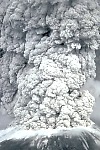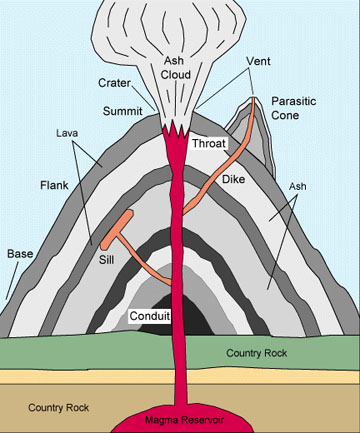
,www.geology.sdsu.edu,how_volcanoes_work,.jpg)

,www.geology.sdsu.edu,how_volcanoes_work,.jpg)
Pictures obtained from www.geology.sdsu.edu/how_volcanoes_work without permission.
At high pressures deep beneath the earth's surface, volcanic gases are dissolved in molten rock. But as magma rises toward the surface where the pressure is lower, gases held in the melt begin to form tiny bubbles. As the magma rises to shallow levels, these gases are released and, because they are so mobile when compared to the sluggish liquid magma, they rise to the surface and are discharged through gas vents as fumaroles.
Closer to the surface, the bubbles increase in number and size so that the gas volume may exceed the melt volume in the magma, creating a magma foam. The rapidly expanding gas bubbles of the foam can lead to explosive eruptions in which the melt is fragmented into pieces of volcanic rock, known as tephra. If the molten rock is not fragmented by explosive activity, a lava flow will be generated.
Below is a picture of the internal structure of an 'ash' volcano:
